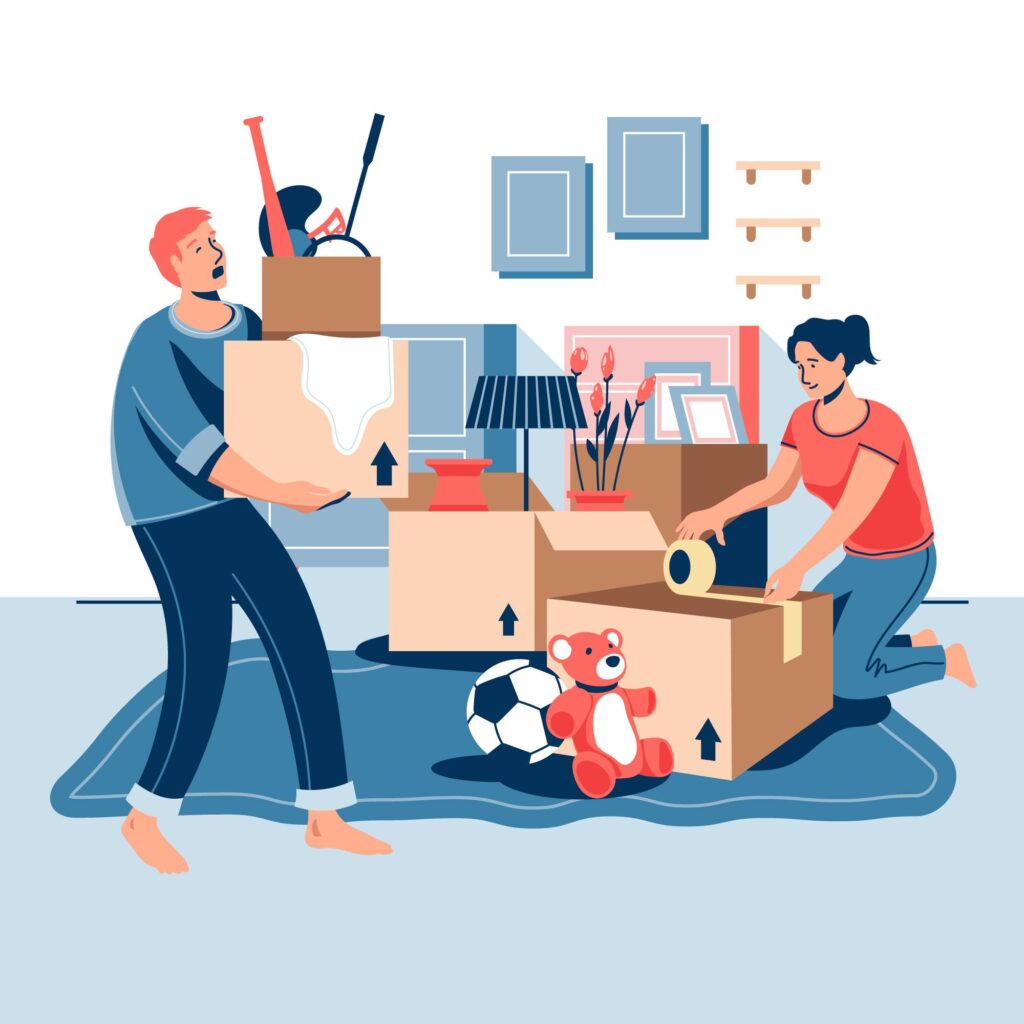Table of Contents

Introduction:
Declutter home is a personal journey. Go at your own plan and style and take care of yourself, don’t rush. Enjoy the process of creating a more organized and peaceful living space! Take breaks whenever its need, and don’t be too demanded on yourself. Decluttering your home can be a refreshing and satisfying process. Here’s a step-by-step guide to help you get started.
Key points to keep in mind to Declutter Home:
Decluttering your home in 30 days can be a manageable and rewarding project. Here’s a step-by-step companion to help you through the process:
Day 1-5: Planning and Preparation to declutter home
- Set pretensions Goals: Decide which areas you want to declutter first. It’s frequently helpful to tackle one room or category at a time. Determine the purpose of decluttering. Aim for more organized space, creating a minimalist terrain and making effects more functional.
- Gather inventories: Get boxes, trash bags, labels, markers for sorting particulars and cleaning inventories.
- Create Categories: Sort items into categories like keep, donate, sell, toss, and unsure. Go through each item one by one and decide if you want to keep, donate, sell, or throw it away.
- Start with a Small Area: Begin with a less cluttered space like a drawer or a single closet.
- Evaluate Storage Solutions: Consider if you need additional storage solutions like shelves, cabinets, or bins to help keep your space organized.

Day 6-10: Bedrooms
- Clothing: Sort through clothes, shoes, and accessories. contribute and vend what you don’t need.
- Bedside Tables and Dressers: Clear off surfaces, leaving only essential items.
- Under the Bed: Remove anything stored beneath and decide if it’s necessary.
Day 11-15: Living Room
- Furniture: Assess if you need all the furniture in the room. Remove any unnecessary pieces.
- Entertainment Center: Organize books, DVDs, and electronics.
- Décor: Consider simplifying decorations to create a more open space.
Day 16-20: Kitchen and Dining Area
- Pantry and Cabinets: Discard expired items and donate non-perishables you won’t use.
- Appliances: Remove duplicates or items you rarely use.
- Utensils and Cookware: Keep only what you use regularly.
Day 21-25: Bathrooms
- Toiletries: Discard expired items, and consider donating unused products.
- Medicine Cabinet: Check for expired medications and dispose of them properly.
- Linens and Towels: Keep only what you need and consider donating extras.
Day 26-30: Miscellaneous Areas
- Home Office: Organize papers, files, and office supplies.
- Storage Areas: Tackle the attic, basement, or garage.
- Sentimental Items: This is often the hardest category. Keep only what truly holds sentimental value.
Related Posts:
Tips to declutter home:
- Stay Consistent: Dedicate a set amount of time each day to avoid burnout.
- Stay Disciplined: Avoid the urge to keep items out of guilt or “just in case.”
- Use the “One In, One Out” Rule: For every new item you bring in, remove an old one.
- Consider the 90/90 Rule: If you haven’t used an item in the last 90 days and don’t foresee using it in the next 90, it’s likely safe to let go.
- Maintain Regularly: Regular maintenance is key to preventing clutter from building up again. Set aside time each month to do a quick sweep and reorganize if necessary.
Don’t Forget:
- Recycle and Dispose Properly: Be mindful of the environment when getting rid of items.
- Donate or Sell: Items in good condition can find new homes. Items that are in good condition but no longer serve a purpose for you can be donated to charity or given to friends or family.
- Keep: Only keep items that you truly need, use, or love. Be honest with yourself about whether you’re likely to use it in the near future.
- Sell: If you have valuable items that you no longer need, consider selling them online or through a garage sale.
- Trash: Declutter home by dispose of broken, damaged, or unusable items responsibly.
- Maintain the Clutter-Free Environment: Regularly review your belongings to prevent re-accumulation.
Checklist for Declutter Home:
1. Clothing and Accessories:
- Clothes that no longer fit or are out of style
- Shoes that are worn out or uncomfortable
- Accessories you no longer wear (e.g., jewelry, belts, hats)
2. Books and Magazines:
- Books you’ve read and don’t plan to re-read, declutter them
- Magazines and newspapers that have piled up
3. Kitchen Items:
- Duplicate utensils or kitchen tools
- Old or chipped dishes and glassware
- Expired food items or spices
- Unused or single-use kitchen gadgets
4. Electronics:
- Outdated or non-functional gadgets
- Chargers or cables you no longer need
- Old or broken appliances
5. Furniture:
- Pieces that no longer serve a purpose or fit your space
- Damaged or worn-out furniture
6. Linens and Bedding:
- Old or worn-out towels, sheets, and bedding
- Linens that don’t match your current decor
7. Home Decor:
- Decorative items that no longer align with your style or taste
- Knick-knacks that clutter surfaces
8. Sentimental Items:
- Evaluate sentimental items and keep only the most meaningful ones
9. Paperwork and Documents:
- Shred or discard old bills, receipts, and documents that are no longer needed
- Organize important paperwork in a filing system
10. Miscellaneous Items:
- Broken or unused items that can’t be repaired
- Craft supplies you no longer use
- Expired cosmetics or toiletries
11. Children’s Toys and Clothing:
- Toys that are no longer played with
- Outgrown or unused children’s clothing
12. Outdoor and Sports Equipment:
- Unused or broken outdoor equipment
- Sports gear that is no longer used or needed
13. Office Supplies:
- Duplicate or unused office supplies
- Outdated technology or software
14. Hobbies and Collections:
- Evaluate hobby-related items and keep only those that bring you joy or have practical use
15. Sentimental Gifts:
- Consider letting go of gifts that no longer hold sentimental value
16. Digital Clutter:
- Delete old files, photos, and emails
- Organize and categorize digital files for easy access
Conclusion:
Remember, the key to successful declutter home is being mindful about what you truly need and use. Take your time, and don’t be afraid to let go of items that no longer serve a purpose in your life.

Your content is consistently top-notch, and I truly appreciate the valuable insight you provide. When it comes to AI and automation, James Jernigan’s YouTube channel is my ultimate resource for brilliant tips. His advice has had a significant impact on my business, making it more efficient and profitable.
10/10! Is there anything else I should consider next? Or is this a good start?